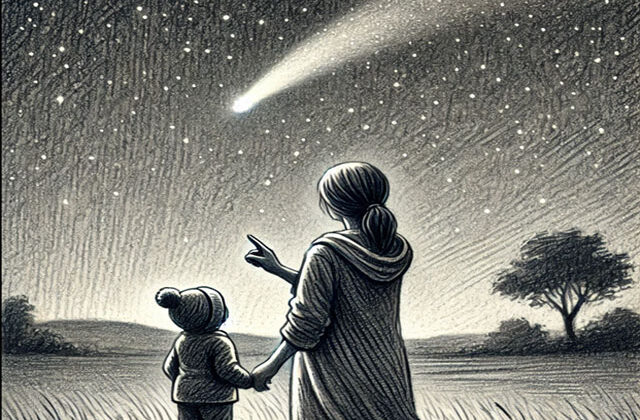Educational Psychologist
Indonesia
Mrs.Devi Venugopal
As a continuation of our topic about anxiety, we will dive deeper with simple conversational tips and break the myths hanging around anxiety.
Why is it important to talk to your child about anxiety?
Children, most of the time, don’t recognize their anxiety for what it is. Instead, they think something is wrong with them. The physical symptoms such as churning stomachs, sweaty palms, and raising heartbeats make them more self-conscious and increase their anxiety. Self-awareness is the first step to deal with anxiety in the right direction.
Talking to your child about anxiety can reduce confusion and shame. Explain to the children that anxiety is a common and normal experience and can be managed successfully. By doing so, we can break the myth of talking about anxiety will increase anxiety.
How to do it? There are three steps to introduce the topic of anxiety to your kids.
Step 1: Encouraging your children to open up
about their fears and worries.
Step 2: Teaching your child about anxiety
Step 3: helping your child recognize anxiety
Step 1: Encouraging your children to
open up about their fears
and worries.
Describe a situation where you recognized the signs of anxiety in your child; for example, “I saw you were sitting next to mom the whole time your friend Stacy visited us yesterday. It is pretty natural to be nervous when visitors come home. What was that like for you?
Tell your child what the fears you had at her age, especially if there are similar, and ask if she has the same kind of worries and fears. For example, when I was a child, I always clung to my mom and hated it when she went somewhere without taking me. My younger daughter, too, clings onto me, so discussing the fears and worries might open up a new door of discussion with your child.
Ask him or her what worries them the most, for younger children need prompting such as: “I know some kids are sacred of …, do you have that fear too?” Being specific can help your child to sort out confusing fears and feelings.
While your child expresses anxiety or worry, offer reassurance by saying I believe him or her, and having those feelings is okay. Be careful about your actions and body language, and kids take their cues from you. Show acceptance of worries and anxious feelings. If you stay calm, it will help your children to remain calm.
One complex yet straightforward tip: Please don’t say, “Don’t worry! Relax!” Hearing this will not help; acknowledge them and their feelings, it is vital to show that you hear and see their fears are confirmed. Your empathy will increase the chances your child accept your guidance and open up to you in the future.
Step 2: Teaching your child about Anxiety
Four important points to
communicate to your child
- Anxiety is normal – Everyone expresses anxiety at times. For example, it’s okay to feel anxious before a rollercoaster ride or a test. Some teens appreciate some facts of how common anxiety problems are. For example, “Do you know that one-in-seven children are suffering from real problems with anxiety?”
- Anxiety is not dangerous – Though anxiety may feel uncomfortable! But it is temporary, so it can’t last long and eventually will decrease. Most people cannot tell when you are anxious, except those close to you like parents and friends.
- Anxiety is adaptive – Anxiety helps us prepare for the real world when facing a snake or giving a public speech. It triggers the flight-fight-freeze response and prepares our bodies to defend themselves. For instance, out beasts faster and pumps more blood to our muscles to run away or fight off danger. When we freeze, we may not have noticed; the risk will pass away. This response is called “anxiety arousal.” Without anxiety, the human species
How you can explain the Fight-Flight-Freeze response to a child
“Imagine you are hiking in the woods, and you come across a bear. What is the first thing you would do? You may run away from the bear, or you may freeze. Another reaction is to yell and wave your arms to appear big and scary. There are three ways humans react to danger: fight, flee, or freeze. When we are anxious, we react in one of these ways, too. We may run away or avoid situations that make us anxious. Or we may freeze, such as when our minds go blank, and we can’t think clearly. Or we may fight, get angry and lash out at people. Can you think of some ways you may fight, flee, or freeze because of anxious feelings?”
How to explain
“anxious arousal” to a teen
Sometimes when we sense something is dangerous or threatening, we automatically go into a state called “anxious arousal.” This can happen when there is a real danger and when something feels dangerous but isn’t, such as giving an oral presentation in class or (provide an example of something relevant to your child). Anxious arousal makes you feel jittery, on edge, and uncomfortable. It may also make it hard to think clearly. This feeling can become overwhelming enough that anxious people stop doing things or going places that make them feel uneasy. Do you believe this is happening to you?
- Anxiety can become a problem – When our body reacts as if we are in danger in the absence of real threat. A good analogy is a false smoke alarm.
How you can explain the “smoke alarm” response:
“An alarm can help protect us when there is an actual fire, but sometimes a smoke alarm is too sensitive and goes off when there isn’t a fire (e.g., burning toast in a toaster). Like a smoke alarm, anxiety is helpful when it works right. But when it goes off when there is no real danger, then we may want to fix it.”
More about how anxiety ‘‘works.”
We can talk with our children about anxiety in three sections.
- Thoughts – What we say to ourselves. (What if my mom doesn’t come home?)
- Physical feelings – How our body responds (Tummyaches, fast heartbeats)
- Behaviors – What we do or our actions. (Finding mom, staying home from school)
Step 3: Helping your child
recognizes anxiety
You can pretend that you both are detectives for younger children and find the anxiety symptoms in thoughts, physical feelings, and avoidance behaviors.
Being a detective – Recognizing physical symptoms.
To help your child aware of the physical symptoms, ask her to draw the body part where she feels uncomfortable. For example, prompt your response as ”When I am anxious, I feel butterflies in my tummy or a big lump in my throat. What happens to you?”
For teens, you can have open dialogue, asking them to notice the physical symptoms. You can also give the music analogy, such as the volume of their anxiety is turned up a bit louder than other kids. They need to learn to turn down the volume.
Being a detective: Recognizing Anxious Thoughts
Younger children may have difficulty in identifying their anxious thoughts. Teens can identify and even challenge unrealistic fears and worries. Regardless of their age, k the children realize the difference between anxious thoughts and real danger, causing them to miss out on fun events.
Being a Detective – Recognizing Avoidance behavior
Ask your child to come up with as many answers as possible to the following:
If you woke up tomorrow morning and all your anxiety had magically disappeared, what would you do? How would you act?
How would your family know you weren’t anxious? (Your teacher? your friends?)
Finish the following sentences:
My anxiety stops me from….
When I am not anxious, I will be able to…
Once your child has gone through these three steps and can understand and recognize anxiety, your child will be better prepared to move on to the next stage – learning how to manage anxiety!






